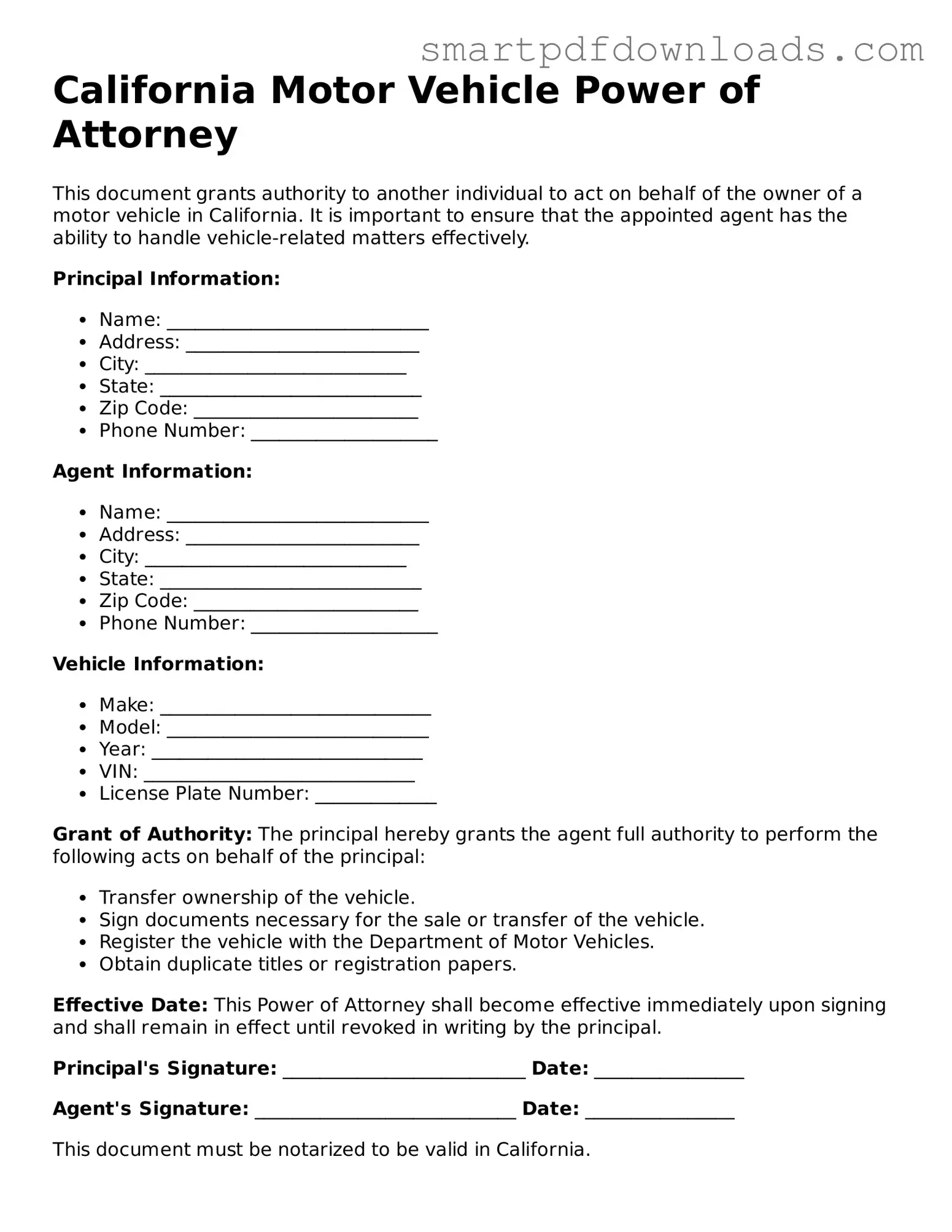California Motor Vehicle Power of Attorney
This document grants authority to another individual to act on behalf of the owner of a motor vehicle in California. It is important to ensure that the appointed agent has the ability to handle vehicle-related matters effectively.
Principal Information:
- Name: ____________________________
- Address: _________________________
- City: ____________________________
- State: ____________________________
- Zip Code: ________________________
- Phone Number: ____________________
Agent Information:
- Name: ____________________________
- Address: _________________________
- City: ____________________________
- State: ____________________________
- Zip Code: ________________________
- Phone Number: ____________________
Vehicle Information:
- Make: _____________________________
- Model: ____________________________
- Year: _____________________________
- VIN: _____________________________
- License Plate Number: _____________
Grant of Authority: The principal hereby grants the agent full authority to perform the following acts on behalf of the principal:
- Transfer ownership of the vehicle.
- Sign documents necessary for the sale or transfer of the vehicle.
- Register the vehicle with the Department of Motor Vehicles.
- Obtain duplicate titles or registration papers.
Effective Date: This Power of Attorney shall become effective immediately upon signing and shall remain in effect until revoked in writing by the principal.
Principal's Signature: __________________________ Date: ________________
Agent's Signature: ____________________________ Date: ________________
This document must be notarized to be valid in California.
